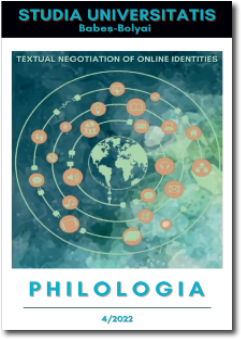MEMEFYING CRISES IN ROMANIA AND JAPAN: A GLOBAL PHENOMENON BEARING LOCAL VALUE
MEMEFYING CRISES IN ROMANIA AND JAPAN: A GLOBAL PHENOMENON BEARING LOCAL VALUE
Author(s): Roxana Maria NistorSubject(s): Communication studies, Sociolinguistics, Culture and social structure
Published by: Studia Universitatis Babes-Bolyai
Keywords: Internet memes; crisis communication; high context; low context; cultural dimensions;
Summary/Abstract: Memefying Crises in Romania and Japan: A Global Phenomenon Bearing Local Value. When faced with unexpected, traumatic events, such as crises, which can trigger fear and anxiety, people react differently. Depending on the type of crisis and on how affected they are by it, people can run in fear (flight), become numb, irresponsive (freeze), please other people (fawn), or stay put and deal with it one way or another (fight). In such cases, humour, irony and sarcasm appear to be a good strategy. As such, Internet memes are an example of a fight reaction that people have to crises, in which they resort to humorous, ironic, sarcastic texts / videos to deal with such unpredictable events that affect the world that they are familiar with, which become highly contagious (transmissible) on the Internet. By carrying out a qualitative analysis of a corpus of Internet memes from Japan and Romania retrieved from Twitter, Instagram, and Facebook, which appeared in the first year of the COVID-19 pandemic, and by looking at Geert Hofstede’s and Edward T. Hall’s cultural dimensions, the purpose of this article is to prove that Internet memes—though they are seen as a global phenomenon—bear some local value and transmit ideas, feelings, and beliefs specific to a culture.
Journal: Studia Universitatis Babes-Bolyai - Philologia
- Issue Year: 67/2022
- Issue No: 4
- Page Range: 35-54
- Page Count: 20
- Language: English

